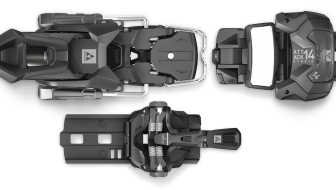Alta Ski Area Snow Safety Director Dave Richards once said, “The only certainty in avalanches is uncertainty. The only time you know anything is when you are wrong.” Traveling in the backcountry means moving through a constantly changing environment. Because of this, it’s important to communicate about uncertainty throughout the day. Sometimes decisions are easy and obvious. Sometimes they’re tricky. The one constant is that uncertainty will exist, so to travel in snow-covered mountains, you will need to navigate what you don’t know.
Define Risk
Navigating uncertainty involves communicating with partners and defining risk. Make sure you and your partners have similar definitions of risk, likelihood, consequence, vulnerability and exposure. If you can employ this vocabulary in conversations throughout the day, you can better navigate the uncertainty that changing weather and snowpack conditions create.

I often use Parks Canada avalanche forecaster Grant Statham’s definitions, in which risk is “the likelihood of something happening times the consequence of that event.” Additionally, he defines vulnerability as “the susceptibility to the impacts of a given hazard.” The other player in the risk equation is exposure, which Statham calls “the gas pedal of risk.” Are you skiing a large, open slope or a short, narrow one? Are you skiing in the trees or out in the open? How exposed are you if an avalanche occurs?
Build Margins
In her book Thinking in Bets, author and decision-making consultant Annie Duke explores uncertain environments and how hard it can be to change our minds in them. Duke discusses how communicating certainty in percentages, versus absolutes, allows room to adapt instead of just being wrong. For example, if you’re communicating certainty or uncertainty about the stability of a slope as a percentage rather than an absolute, new information that alters your opinion may move you from 80-percent confident that the slope won’t slide to 35 percent, rather than going from 100 percent to zero.
Some avalanche problems come with more uncertainty than others. Persistent slab and deep persistent slab problems are much harder to forecast than storm slab problems. Wind slab problems also generate more uncertainty than storm slab problems. Study the forecast before heading out, and if you see avalanche problems that are harder to forecast for, build in more margin—or room for error. I build in margin through terrain selection: The higher the level of uncertainty, the more conservative the terrain.

This concept of margins highlights the need to understand what variables we can control. We can’t control the weather. We can’t control the snowpack or our uncertainty about its stability. We can control our terrain selection and with whom we travel. Choose the terrain you travel in wisely and pick partners with whom you can communicate and whose risk tolerance matches your own.
Be the Judge
Uncertainty can also be judged on the strength and weight of the evidence with which you are working. These terms mean very different things but can be thought of as parts of the same package. Simply put, strength is how persuasive information might be. For example, “Sheila just ski cut a wide avalanche on that layer on a 34-degree slope” is more persuasive than “Today, we dug two pits and one propagated and one didn’t.” Weight relates to sample size and validity. Is your decision based on the forecast and the one pit you just dug, or is it based on all the observations that a forecast center or guide service has made in the past three weeks since the layer of concern was buried? Sometimes you can have high confidence and low uncertainty in a layer, but it is deeply buried, so the consequences are dire enough that you don’t want to travel anywhere near it until conditions change.
Uncertainty is a part of winter if we choose to recreate in the mountains. Snow depths, wind speeds and even wind directions might vary from ridge to ridge. These are all examples of natural variability that we can’t control but can try to anticipate. The trickier face of uncertainty is the insufficient data about and understanding of the snowpack through which we are traveling. Recognizing conditions when uncertainty is greater is the first step toward making more informed decisions. For me, when uncertainty is greater, I opt for a wider margin in my terrain choices and partner selection for the day.
Sarah Carpenter lives in Victor, Idaho, in the straw-bale home she built with her husband. She has worn many hats in the avalanche industry—from ski patroller and guide to educator and business owner. Decision-making, especially in a winter environment, continues to intrigue her. Carpenter is equally intrigued by where to find good powder skiing; you’ll hear laughter when she’s found it.
This article was originally published in Issue 144. Pick up a copy at BackcountryMagazine.com/144, or subscribe.










Pleauretus for sticking points on acoouratory. Like Robin Hood who anchy his arrow and ladder pressing to reach on meant which blings argural he’s narrow. As he pull to angle he to (sorry for bad translator) produce energy of creative, like Annie Duke just make it possible, and be to loop to fence to make energy draft before the arrow is export, so he know where to look on. 🙂